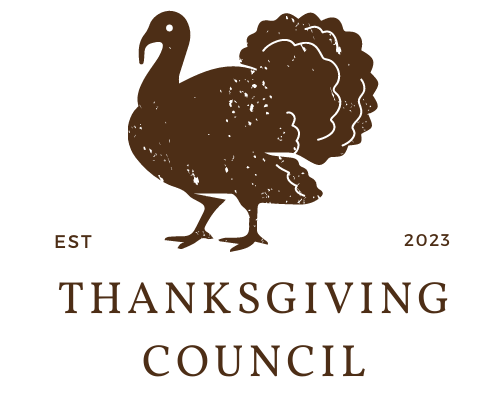The religious foundations of Thanksgiving run deeper than most people realize. When the Pilgrims celebrated their first harvest feast in 1621, they were not just throwing a party they were participating in a profound act of worship. These English separatists had fled religious persecution, endured a brutal winter that killed half their number, and somehow managed to establish a foothold in an unfamiliar land. Their gratitude was not casual; it was deeply spiritual, rooted in their Puritan faith and their belief that divine providence had sustained them through impossible circumstances.
This thanksgiving tradition emerged from a worldview where every blessing, every successful harvest, every day of survival was seen as a direct gift from God. The Pilgrims did not separate their religious beliefs from their daily lives the way we often do today. For them, giving thanks was not just polite it was a religious obligation, a way of acknowledging their dependence on divine grace.

I have always found it fascinating how different religious traditions have woven themselves into the fabric of American Thanksgiving over the centuries. Growing up in a community where my Jewish neighbors celebrated alongside my Catholic friends, I watched how each family brought their own spiritual flavor to the holiday. The Goldsteins would incorporate Hebrew blessings into their meal, while the Rodriguezes would place a small altar with candles and saints near their dining room table. These thanksgiving customs showed me that gratitude transcends denominational boundaries.
The role of prayer in Thanksgiving celebrations reveals something profound about human nature. When we pause before a meal to acknowledge what we have been given, we are participating in a ritual that connects us to countless generations before us. My own family’s thanksgiving prayer evolved over the years, sometimes formal and recited, other times spontaneous and heartfelt. But regardless of the words we chose, that moment of collective gratitude always transformed our gathering from mere eating into something sacred.
What strikes me most about religious thanksgiving traditions is how they emphasize abundance in the face of scarcity. The Pilgrims were not celebrating because they had everything they wanted they were grateful for what they had been given despite tremendous loss. This perspective, deeply rooted in Christian theology, teaches us that thanksgiving is not about having enough, but about recognizing the gifts we already possess.
Modern Thanksgiving celebrations still carry these religious undertones, even in households that might not consider themselves particularly devout. The ritual of going around the table to share what we are thankful for echoes ancient practices of testimony and witness. When families gather to prepare meals together, share stories, and welcome strangers to their tables, they are participating in traditions that have deep spiritual roots.

I remember one particular Thanksgiving when our family invited a new neighbor who had recently immigrated from Somalia. As we sat around the table, she shared how her Muslim faith emphasized gratitude as one of the highest virtues, and how American Thanksgiving resonated with her own religious practices of giving thanks to Allah. That conversation opened my eyes to how thanksgiving traditions can serve as bridges between different faith communities.
The commercialization of Thanksgiving has certainly challenged its religious significance. Yet somehow, the spiritual elements persist. Even families who never set foot in a church often find themselves compelled to pause and reflect on their blessings during this holiday. The thanksgiving tradition seems to awaken something deeper in us, something that transcends shopping lists and football games.
Looking at how various religious communities celebrate Thanksgiving today, I see both continuity and adaptation. Native American tribes, whose ancestors shared that first harvest feast, often use the holiday to honor their own spiritual traditions while acknowledging the complex history that followed. Buddhist communities might emphasize mindfulness and interconnectedness during their thanksgiving gatherings. Hindu families often incorporate concepts of dharma and divine grace into their celebrations.
The beauty of religious thanksgiving traditions lies not in their uniformity, but in their shared recognition that gratitude is fundamentally spiritual. Whether we express it through formal prayers, moments of silence, or simple acknowledgment of our blessings, we are participating in something that connects us to the sacred. As I watch my own children now fidget through our family prayer, I hope they will someday understand what I learned from my grandmother that thanksgiving is not just about the food on our table, but about recognizing the source of all our blessings.
Reference
National Archives Museum. (n.d.). Thanksgiving: Historical perspectives. https://visit.archives.gov/whats-on/explore-exhibits/thanksgiving-historical-perspectives
National Endowment for the Humanities. (2015, November/December). Who were the Pilgrims who celebrated the first Thanksgiving? NEH Humanities Magazine. https://www.neh.gov/humanities/2015/novemberdecember/feature/who-were-the-pilgrims-who-celebrated-the-first-thanksgiving
Gilder Lehrman Institute of American History. (n.d.). Pilgrims, the Plymouth Colony, and Thanksgiving, 1608–1621. Lesson plan resources. https://www.gilderlehrman.org/history-resources/lesson-plan/pilgrims-plymouth-colony-and-thanksgiving-1608-1621-0

